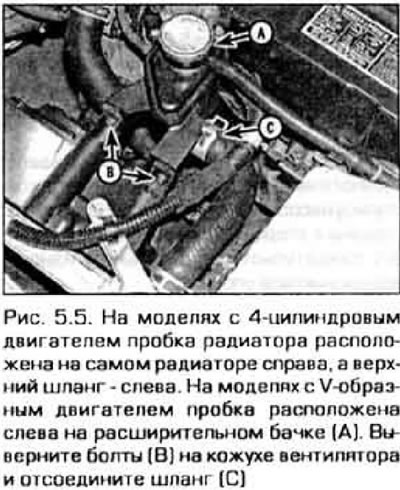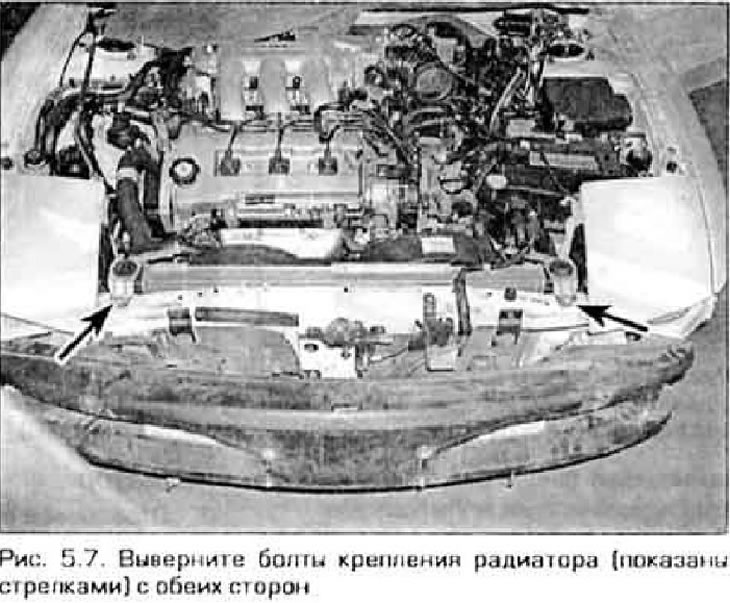Attention! Do not start this work until the engine has cooled down.
Expansion tank
1. Disconnect from a mouth of a broad tank the hose connecting it with a radiator. Turn out bolts of fastening of a tank and remove it from the car (pic. 5.1, a, b). Drain the liquid from the tank into a suitable container. Inspect the tank for cracks or other damage.
 |  |
Radiator
2. Disconnect the negative cable from the battery.
Caution: If your vehicle's audio system is equipped with an anti-theft protection, make sure you know the unlock code before disconnecting the battery.
3. Drain the coolant into a clean container.
4. Remove fans (see paragraph 4).
5. Disconnect the expansion tank hose from the radiator neck. Loosen the upper and lower radiator hose clamps and disconnect the hoses (pic. 5.5).

6. On models with automatic transmission, disconnect the oil heat exchanger hoses from the radiator (pic. 5.6). Substitute a container to collect the transmission fluid and plug the holes so that dirt does not get into the system.

7. Turn out bolts of fastening of a radiator (one on each side) and pull the radiator up (pic. 5.7).

Note. From below, the radiator is mounted without bolts on the support frame.
8. Once the heatsink has been removed, it can be inspected for leaks, damage, and clogged core tubes. If repair is required, take it to a service station or a specialist workshop, as the repair requires special equipment and techniques.
9. External clogging of the core with insects, leaves and other dirt can be removed with a soft brush and compressed air. Do not attempt to fix bent grille fins yourself.
Attention! Protect your eyes when working with compressed air.
10. The radiator is installed in the reverse order. Install the radiator correctly into the base frame. Tighten the fan shroud and air intake duct bolts securely.
11. Fill the cooling system with liquid of the previous composition. If necessary, contact for details chapter 1.
12. Start the engine and check for leaks. Warm up the engine to normal operating temperature when both radiator hoses become hot. Check the coolant level and top up as needed.
13. On models with automatic transmission, check the fluid level in the transmission and add as needed.
